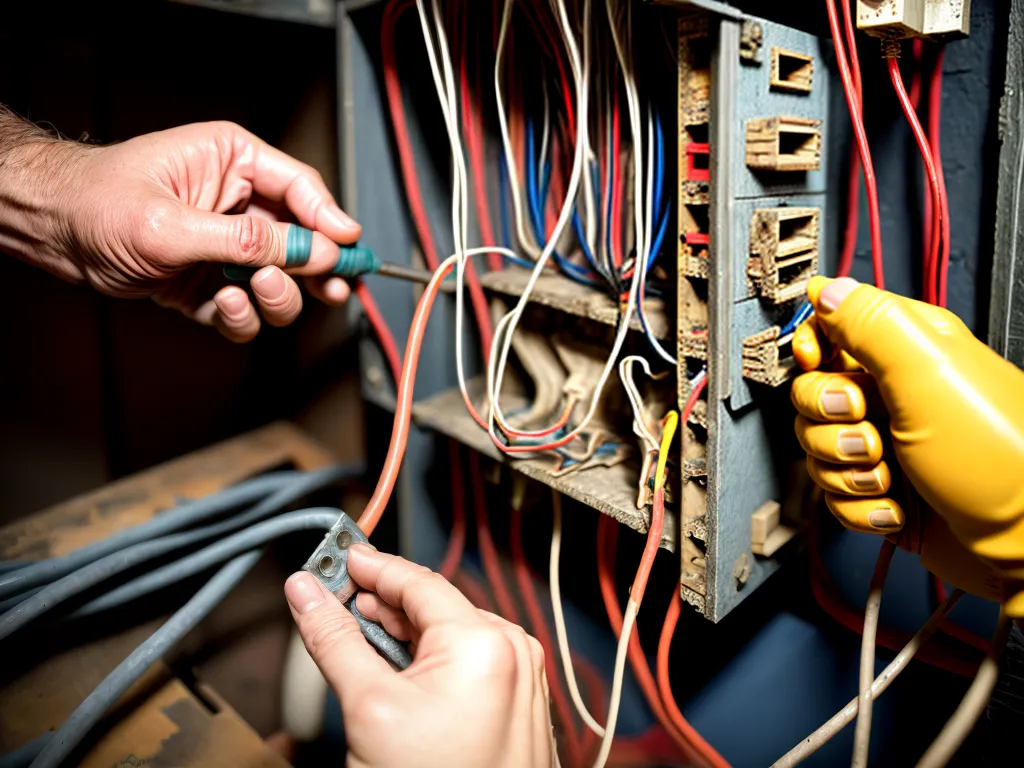
Updating Old Electrical Wiring to Meet Current Safety Standards
Introduction
Meeting current electrical safety standards is crucial for preventing fires, electrocution, and other hazards in homes and businesses. With older homes, upgrades are often needed as electrical codes have changed significantly over the decades. This article will provide homeowners and business owners guidance on identifying outdated electrical systems, understanding electrical code requirements, and the process of rewiring to meet modern safety standards.
Signs You Need Electrical Wiring Updates
Knowing when it's time to update home or business wiring can literally be a life-saving decision. Here are some red flags your electrical system needs an upgrade:
Frequent Tripped Breakers and Blown Fuses
If you find yourself constantly resetting tripped circuit breakers or replacing blown fuses, it likely indicates an overloaded electrical system. New high-wattage appliances and electronics can overwhelm old wiring.
Not Enough Outlets
Most older homes have far fewer electrical outlets than needed today. This forces use of extension cords and power strips that stress the system. Insufficient outlets also increase fire risks.
Two-Prong Outlets
Homes built before the 1960s often relied on outdated two-prong outlets. These lack a ground wire which is essential for safety. Upgrading to modern grounded three-prong outlets is recommended.
Exposed and Damaged Wiring
Frayed, cracked, or otherwise damaged wiring poses serious risks. If any electrical wires are exposed, wiring insulation is brittle, or connections are loose, repairs are needed.
Buzzing, Flickering Lights
Flickering lights or outlets that spark excessively when plugging in appliances indicate loose connections. Buzzing from switches, outlets, or along wiring runs also signals problems.
Older Home with No Circuit Breakers
Homes built before circuit breakers became standard have outdated fuse boxes. Rewiring will allow installing modern circuit breaker panels for better protection.
Overview of Electrical Code Updates
Electrical codes have undergone major advancements in safety. Key ways modern National Electrical Code (NEC) standards exceed those of decades past:
- Grounded outlets - Now required in most areas of homes. Protects from shocks and allows surge protectors.
- GFCI protected circuits - Helps prevent electrocution around water sources like kitchens and bathrooms.
- AFCI protection - Advanced circuit breakers reduce fire risks. Required in bedroom circuits.
- Higher capacity - Today's increased electrical usage requires bigger wire gauges and more circuits than old homes provide.
- Safety devices - Arc-fault circuit interrupters (AFCIs), tamper-resistant outlets, and other advances are now required.
Bottom line, if your home hasn't had a major electrical upgrade in over 20 years, it likely needs one to meet modern safety codes.
components of a complete rewiring job
Upgrading home wiring is a major project best left to licensed electricians. But here is an overview of what a full electrical rewiring job involves:
New circuit breaker panel
A new panel will be installed with enough capacity for the home's needs. This features modern circuit breakers for each circuit rather than outdated fuses.
Running new wire
All existing wiring will be removed. New wire meeting current code gauge requirements will be run through walls and ceilings to each outlet, switch, and lighting fixture.
Installing safety devices
GFCIs, AFCIs, and tamper-resistant outlets will be installed per code requirements. Surge protectors may also be added.
New grounded outlets
Outdated two-prong outlets will be replaced with modern three-prong outlets properly grounded to ensure safety.
Added lighting circuits
Many older homes lack sufficient lighting circuits, requiring upgrades to prevent overloads. This allows more energy-efficient lighting.
Inspection
Thorough inspection ensures all wiring meets building and fire codes. The electrical utility also inspects before reconnecting power.
Costs of rewiring an older home
Rewiring cost for an average 1500 square foot home generally ranges from $8,000 to $15,000 on average. Factors impacting total costs include:
- House layout and wiring access difficulties
- Number of circuits needed
- Degree of demolition/drywall repair required
- Local labor rates
- Extent of other upgrades performed
Price may be higher for larger homes or those with complex layouts. Though not cheap, this major electrical investment boosts safety and pays dividends for decades after through lower maintenance costs and fewer problems.
Is rewiring absolutely necessary?
Upgrading home wiring may seem like an overwhelming project, leading some to ask - is it absolutely needed? The answer is rewiring down to the studs, while costly, provides maximum safety and peace of mind.
That said, for those lacking funds for a full rewire, some alternatives exist:
- Adding GFCI outlets - Less comprehensive but adds protection in kitchen, baths, laundry, etc.
- Installing AFCI breakers - Helps prevent fires; doesn't address other issues.
- Running new wires to add circuits - Partial upgrade when full rewire not feasible.
- Upgrading the circuit panel only - The first step, but doesn't address old wiring.
These options improve safety marginally. However, a full rewiring remains the gold standard for bringing wiring completely up to modern code.
Conclusion
Our homes and businesses rely on electrical systems being safe and reliable. But with wiring standards constantly improving, even systems only a few decades old can be woefully outdated and hazardous. Taking steps to identify needed electrical upgrades and invest in rewiring provides substantial benefits for safety and peace of mind. Though costly, a complete electrical rewiring is one project that pays you back every day through enhanced security and performance.